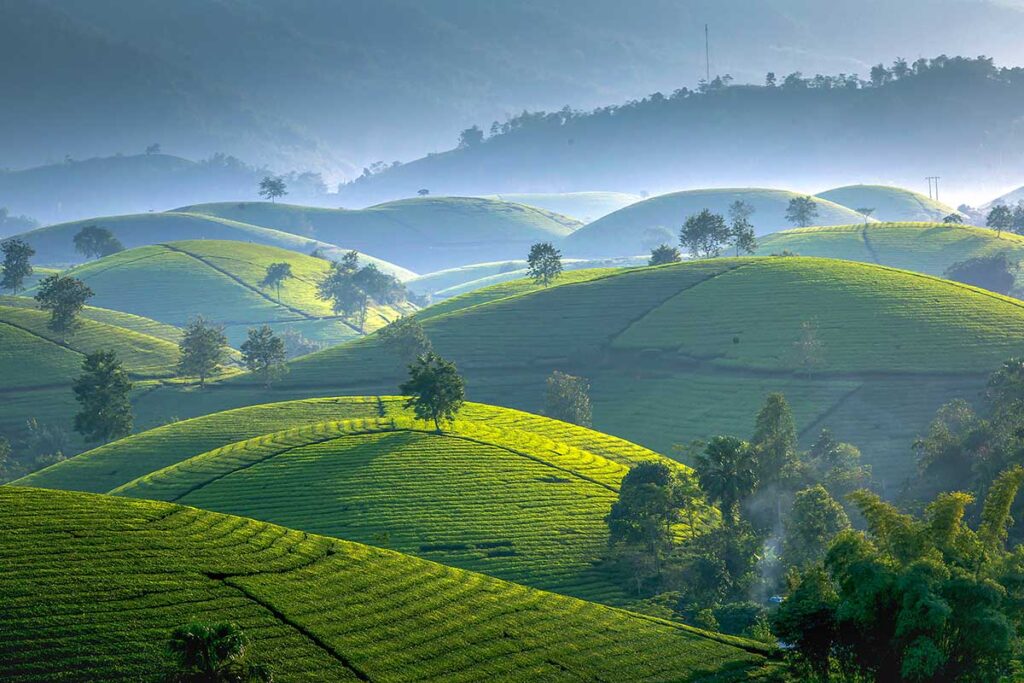What are the Long Coc Tea Hills Like?
Location and Landscape
Long Coc Tea Hills are located in Long Coc Commune, Tan Son District, in Phu Tho Province, about 125 kilometers northwest of Hanoi. The area is part of Vietnam’s northern midlands, with a landscape that feels more like highlands due to its rolling terrain and cooler climate.
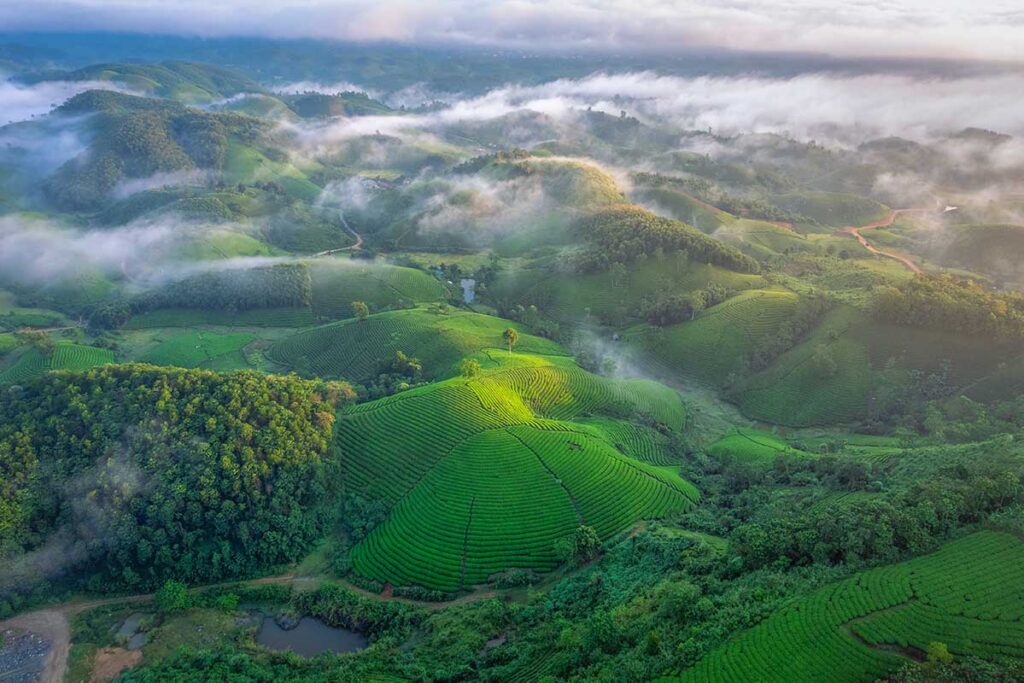
The tea hills themselves are made up of hundreds of small, round hills, each covered in neatly trimmed rows of tea bushes. From above, they resemble inverted bowls, scattered across the landscape in soft, undulating waves. It’s this distinctive shape, combined with the natural light and mist of early morning, that gives the area its otherworldly atmosphere and draws photographers from all over the country.
Mornings are especially magical. When the sun begins to rise, soft rays pierce through the fog, revealing hill after hill through shifting layers of light and shadow — a scene that has earned Long Coc nicknames like “the Halong Bay of the Midlands.”
Tea Cultivation, History, and Local Life
Tea has been grown in Long Coc since the late 19th or early 20th century, during the French colonial period. The French introduced tea plantations throughout northern Vietnam, and Long Coc’s fertile soil, gentle slopes, and moderate climate made it a natural fit. Over time, it developed into one of Phu Tho’s key tea-growing areas.
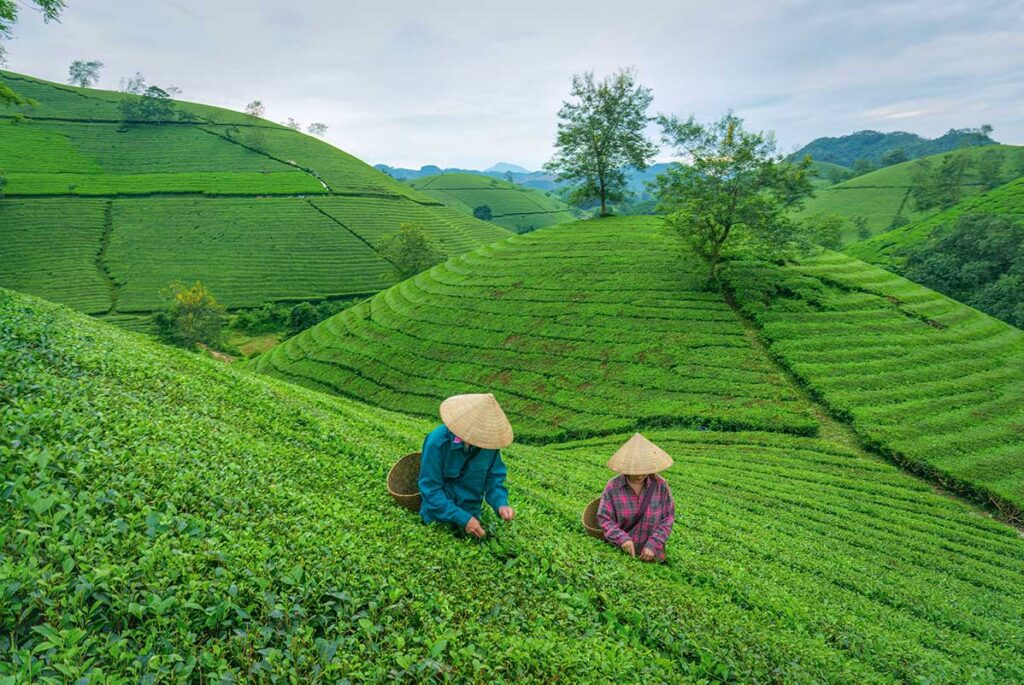
Today, the 600-hectare tea region is mainly tended by members of the Muong and Dao ethnic minorities, who live in villages surrounding the hills. Most tea hills are farmed individually by local households, using small-scale, traditional methods. You may see tea being harvested by hand or dried near village homes, especially during the picking seasons.
Two popular tea varieties grown here are Shan Tuyet and Bat Tien, known for their distinct aroma and taste. While Long Coc doesn’t have organized tea tours, some visitors are able to taste or buy fresh tea directly from locals during walks or with the help of a guide or homestay host.
What to do at Long Coc Tea Hills
1. Admire sunrise and sunset views
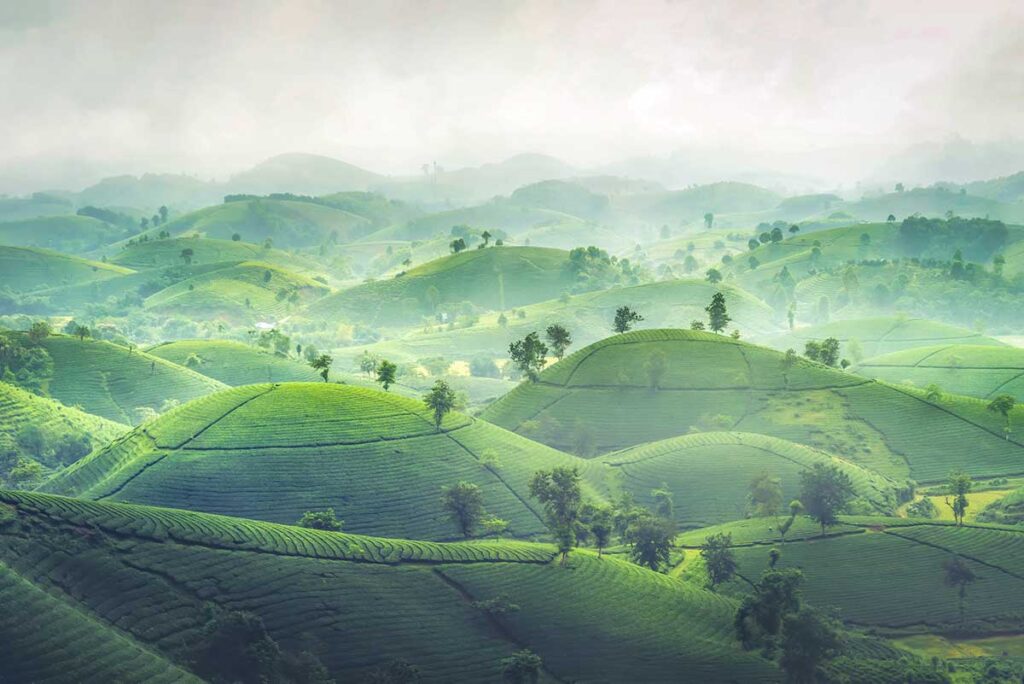
The most popular reason to visit Long Coc is to watch the sunrise from the top of the tea hills. Early mornings, especially between October and December, often bring a light mist that clings to the valleys while the first rays of sunlight highlight the shape of the hills. This is when photographers, both amateur and professional, line up with their tripods to capture the scene.
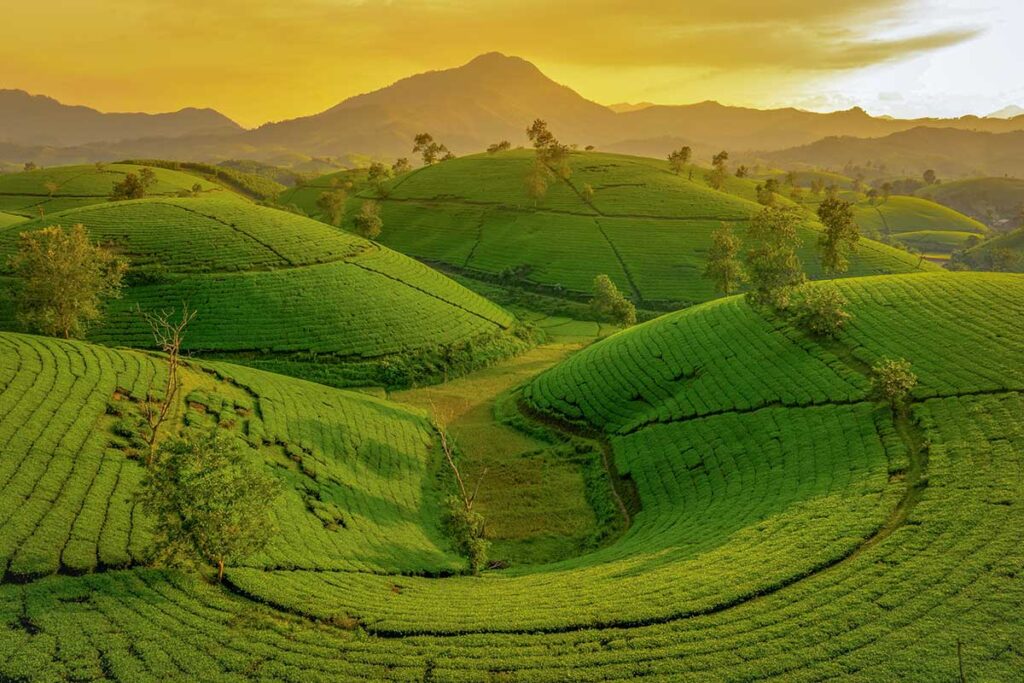
Sunset is also a good time to visit — it’s usually quieter, and the softer light in the late afternoon adds a different feel to the landscape. If you’re into photography, bring a proper camera and arrive early to claim a good spot. Keep in mind that mist isn’t guaranteed every day, and some photographers return multiple times before catching the perfect conditions.
2. Walk or hike through the tea fields
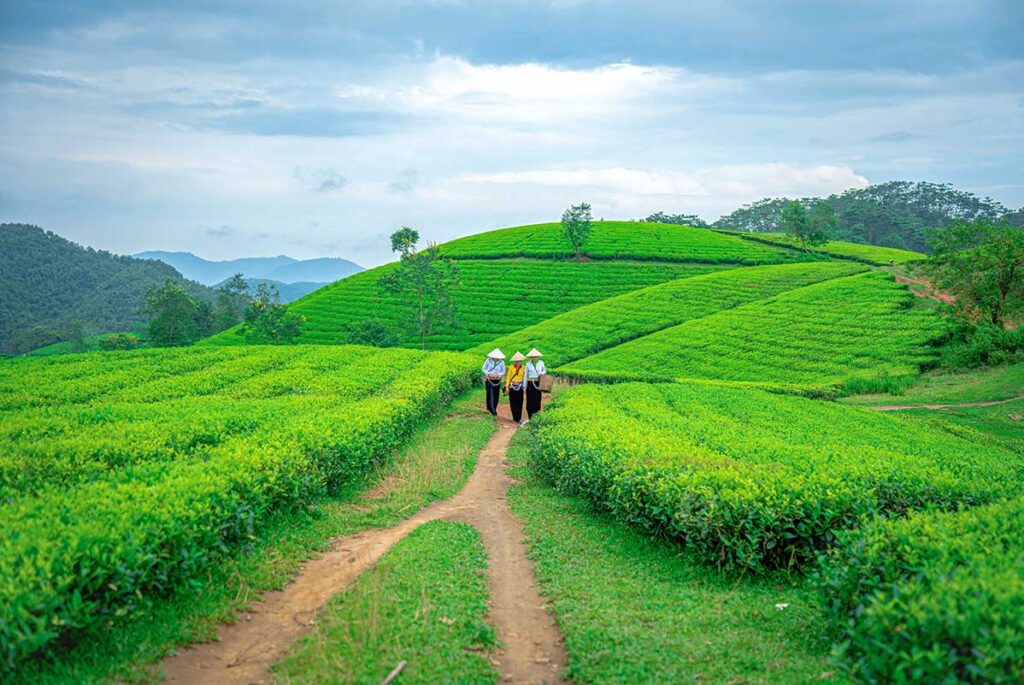
There are no marked trails, but it’s easy to walk between the tea hills on narrow dirt paths. A common route is to walk from the village area to the main viewpoint, which takes about 45 to 60 minutes at a relaxed pace. The paths are not difficult, but can be uneven, steep, or slippery depending on recent weather — good shoes are important.
You may pass by local tea workers along the way, especially in the early morning. Near the top, some locals offer tea tastings or help take photos. There are no official tea tours, so everything is informal. If you’re lucky, you might also spot women carrying fresh tea leaves in large baskets or drying them beside their homes.
3. Tea picking experience (Seasonal)
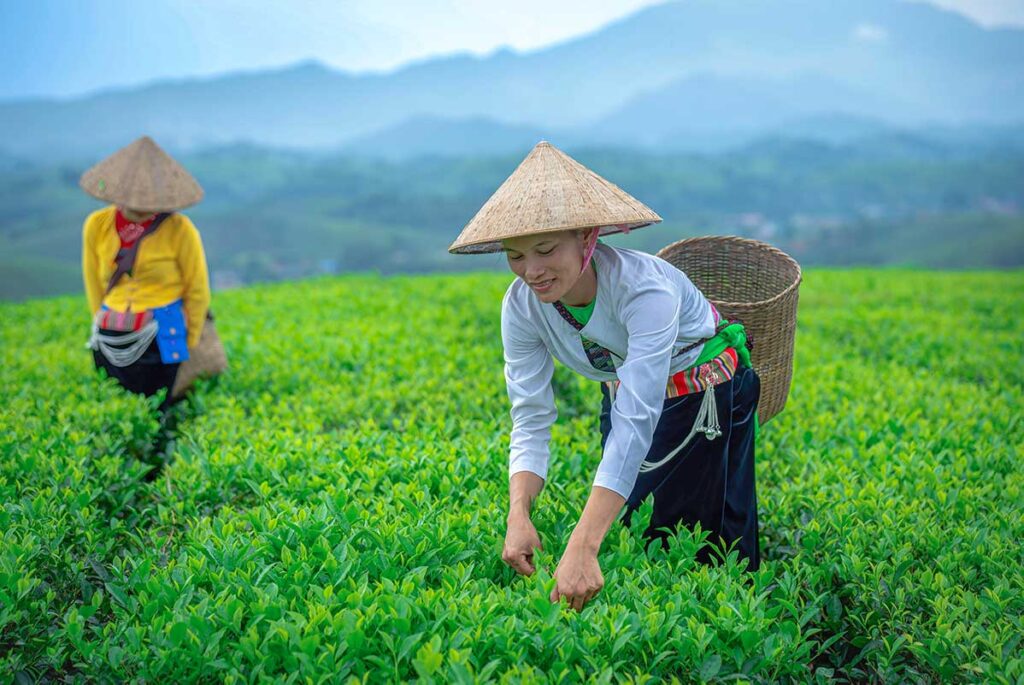
From time to time, visitors can join locals in picking tea leaves, especially during the harvest periods. This experience is not arranged through agencies or set programs, so it’s best done with the help of a homestay host or local guide. It’s a casual, real-life activity — not a performance for tourists — so you’ll need to ask around politely and be flexible.
Even if you don’t join in, it’s easy to observe tea cultivation up close as you walk through the fields. You might also be able to buy or sample tea such as Shan Tuyet or Bat Tien directly from local households.
4. Stargazing or Peaceful escapes
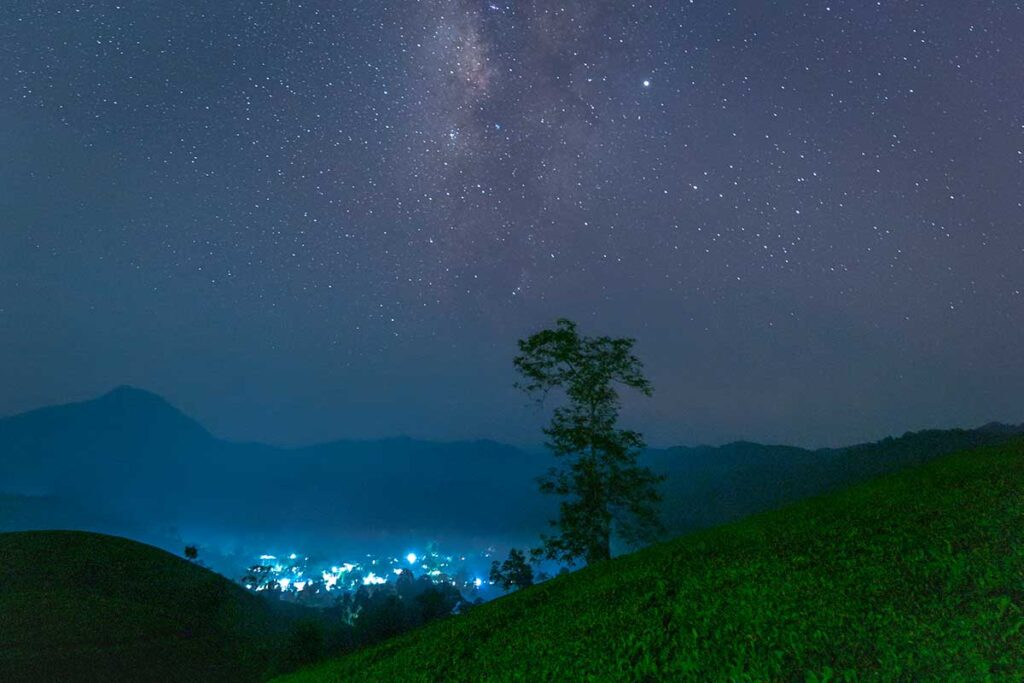
Long Coc is far from the cities and lacks heavy development, making it a good place for stargazing on clear nights. There’s little light pollution, and the silence is only broken by sounds of nature or the occasional motorbike in the distance.
If you’re just looking to get out of Hanoi for a night or two, this is a peaceful and quiet place to relax. Just keep in mind that there’s no tourist infrastructure: no signs, no viewpoints with guardrails, and no official services.
The final road leading to the main viewpoint is steep, narrow, and unpaved. While you can walk up from the bottom, some local residents offer motorbike taxi rides up and down for about 50,000 VND round trip. If you’re driving yourself, be cautious — the road is not recommended for inexperienced motorbike riders, especially in wet weather.
Best time to visit Long Coc Tea Hills
The best time to visit Long Coc Tea Hills is from October to early December, when the mornings are cool and often blanketed in mist. During this period, the skies are usually clear, and the tea hills are at their greenest and most photogenic — perfect for sunrise views and photography.
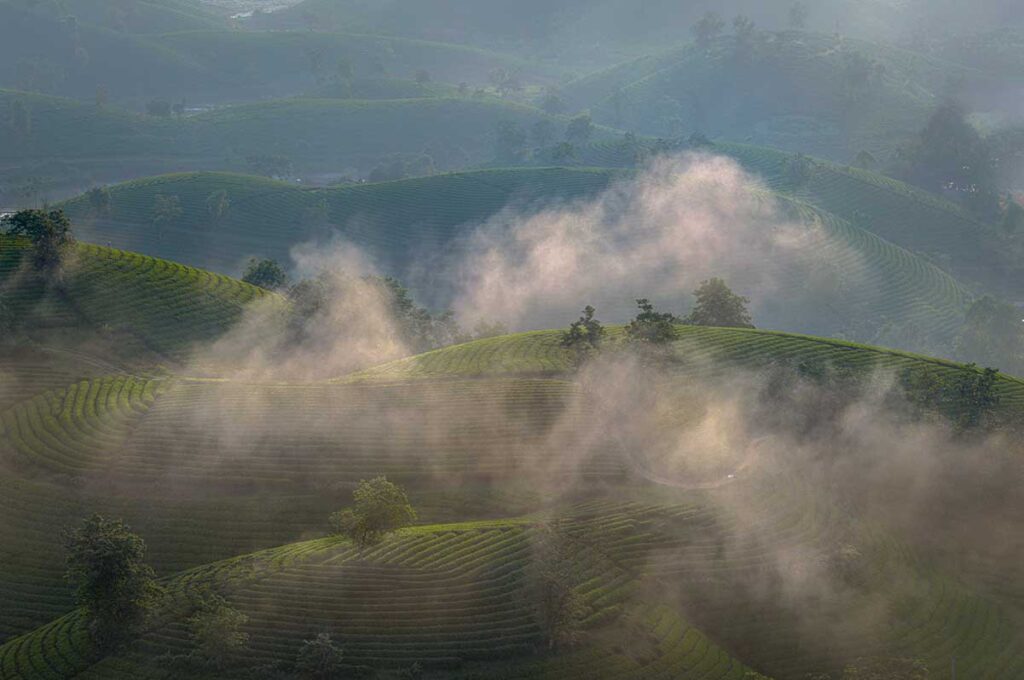
Another good window is April to May, when the tea bushes begin to sprout fresh leaves after pruning. The landscape is vibrant, the weather is mild, and walking conditions are generally comfortable.
It’s best to avoid the peak rainy season from July to August. Heavy rainfall can turn the steep, unpaved roads into slippery, muddy tracks, making access more difficult and the views less impressive due to cloud cover and poor visibility.
No matter the season, sunrise is always the most rewarding time of day to visit. That said, mist is never guaranteed — even during the ideal months — so if you’re aiming for perfect conditions, consider staying overnight and allowing some flexibility in your schedule.
How to get to Long Coc Tea Hills
From Hanoi (Private Transfer or Motorbike)
Long Coc Tea Hills are located about 125 kilometers from Hanoi, and the drive takes around 2.5 to 3 hours by private car or motorbike, depending on traffic and road conditions. The most common driving routes are via QL32 or Thang Long Avenue connecting to provincial road TL87A through Thanh Son District.
If you’re not driving yourself, private car with driver is the most comfortable and stress-free option, especially if you’re planning a sunrise visit and want to arrive the night before.
Travel to Long Coc with a private car
Avoid tricky transfers and get straight to the tea hills. Our drivers pick you up in Hanoi and bring you comfortably to Long Coc. Great for sunrise trips or custom itineraries combined with nearby sights.
Riding a motorbike is possible and common among adventurous travelers, but the final stretch of road to the viewpoint is steep, unpaved, and narrow. It’s not recommended for beginners or anyone unfamiliar with off-road conditions. If you’re unsure, it’s safer to park near the bottom of the hill and walk, or use a local motorbike taxi service — expect to pay around 50,000 VND for a round-trip ride up and down.
From Phu Tho City (Local start point)
If you’re already in Phu Tho Province or looking for a more economical route, you can first travel to Viet Tri or Phu Tho City by bus or train from Hanoi. From there, it’s possible to rent a car, hire a taxi, or arrange a local motorbike transfer to Long Coc.
This option may take a bit longer overall but can be convenient if you’re combining your visit with other regional attractions like the Hung Kings Temple Complex or Xuan Son National Park.
Regardless of your starting point, keep in mind that Long Coc is remote and lacks public transport connections — private transport remains the most reliable way to reach the tea hills.
What’s nearby? (For combination trips)
You’re already in Phu Tho Province, so it’s a great opportunity to combine your visit to Long Coc Tea Hills with other nearby attractions. Whether you’re into hiking, cultural history, or just want to make your trip more worthwhile, there are two standout destinations within easy reach.
For more ideas, see our complete Phu Tho Travel Guide
Xuan Son National Park
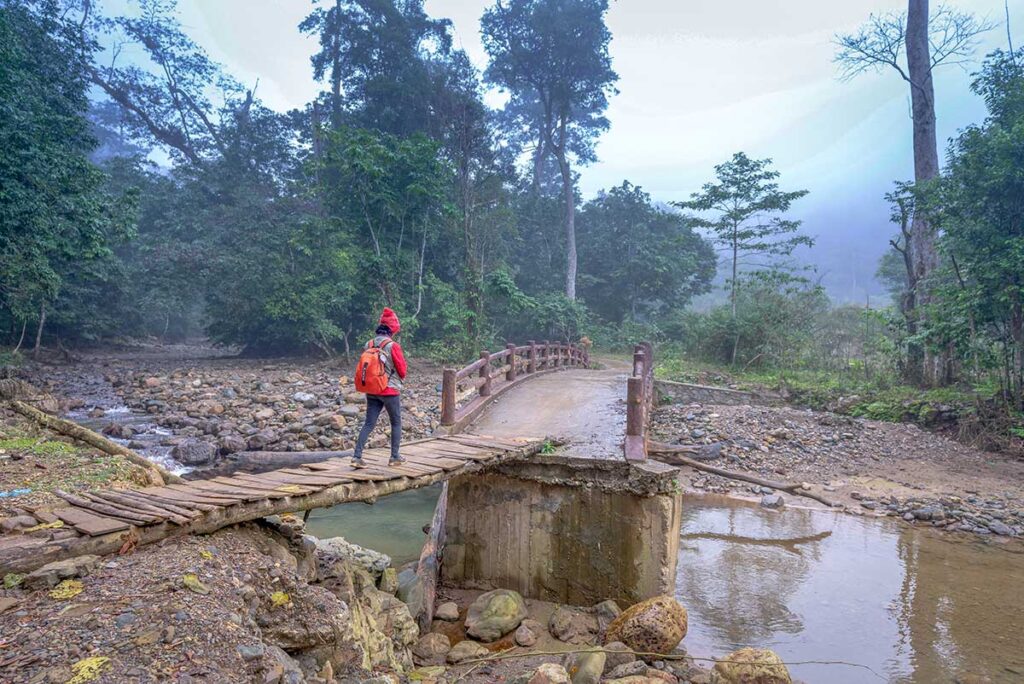
Located in the same district (Tan Son) as Long Coc, Xuan Son National Park is a quiet, underrated nature reserve with dense forests, hidden caves, small waterfalls, and traditional ethnic minority villages. It’s ideal for nature lovers looking for peaceful hikes, wildlife encounters, or a more off-the-grid experience.
The park is home to Muong and Dao communities, and you can arrange local homestays to explore the culture as well as the scenery. Trails are not overly developed, so it’s best to go with a guide or come prepared.
Read the full guide to Xuan Son National Park
Hung Kings Temple Complex
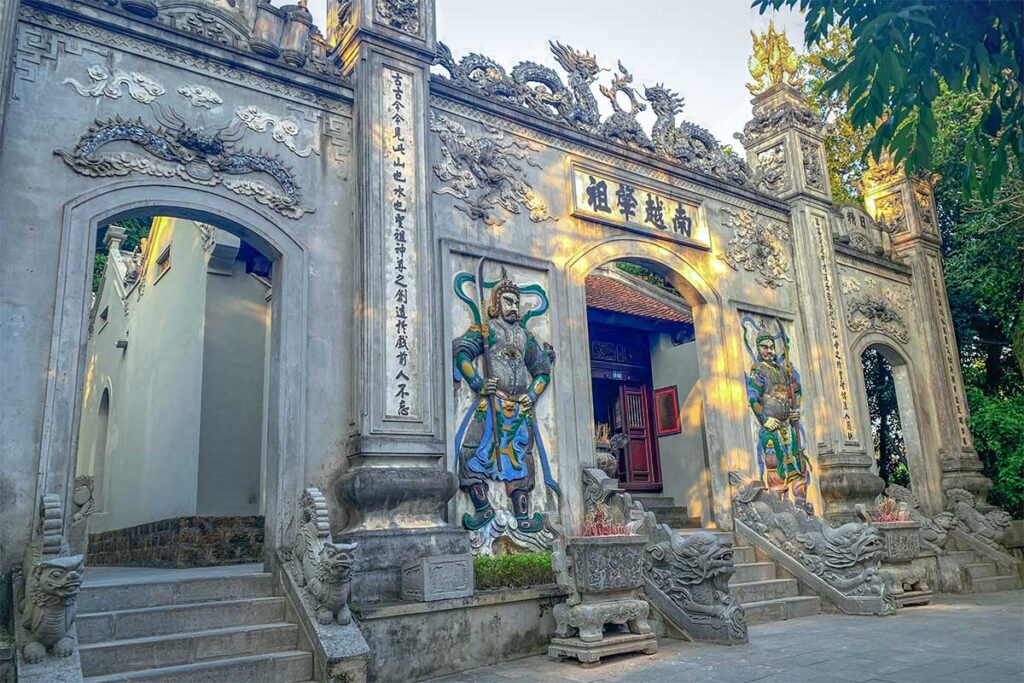
The Hung Kings Temple Complex (Den Hung) is one of Vietnam’s most important cultural and spiritual sites, honoring the mythical founders of the Vietnamese nation. It’s located on Nghia Linh Mountain, not far from Viet Tri City, and can be easily combined with a trip to Long Coc.
You’ll find a series of temples, altars, and monuments spread out across the hillside, along with forested walking paths and panoramic viewpoints. Many visitors combine the Hung Temple and Long Coc into a 1- or 2-day itinerary from Hanoi or Phu Tho City.
Read the full guide to Hung Kings Temple
Is Long Coc Tea Hills worth visiting?
Long Coc is a scenic and peaceful destination, especially appealing to photographers and travelers who enjoy quiet landscapes and early mornings. The misty tea hills are undeniably beautiful — but if you’re thinking about making the long trip from Hanoi only for this view, it’s important to manage expectations.
Northern Vietnam is full of impressive destinations with much more to offer in terms of scale and variety. If you’re short on time, it may be better to focus on regions like Sapa, Ha Giang, or Cao Bang, which combine dramatic landscapes with cultural experiences, trekking routes, and other attractions. And for travelers specifically interested in tea hills, Moc Chau is a more popular choice — not just for its plantations, but also for the number of things you can do around them.
➤ Read our full guide to Moc Chau
That said, Long Coc is still a worthwhile stop if you’re:
- Already in Phu Tho Province
- Combining it with Xuan Son National Park or the Hung Kings Temple Complex
- Passing through on a longer trip into northern Vietnam
- Aiming for misty sunrise photos in a quiet, undeveloped setting
Just don’t expect a full-day itinerary or a wide range of activities. Long Coc is all about a moment of quiet beauty, not a destination packed with things to do.
Travel tips for visiting Long Coc
- Footwear: Wear sturdy walking shoes or hiking sandals — trails around the tea hills are unpaved, uneven, and can be slippery after rain.
- Clothing: Mornings can be chilly, especially between October and December. Dress in layers so you can adjust as temperatures rise through the day.
- Sunrise logistics: If you’re aiming to photograph the sunrise, it’s best to arrive the evening before and stay nearby. Early morning travel from Hanoi is possible but rushed.
- Photography: While Long Coc is famous for its misty mornings, mist is never guaranteed. Many photographers return multiple times to catch the perfect conditions.
- Transport caution: The final road to the viewpoint is steep and unpaved. If you’re unsure about riding a motorbike, walk or hire a local motorbike taxi instead of driving yourself.
- Tea gifts: You can often buy fresh or dried tea directly from local households near the plantations — just ask politely or through your homestay.
- Respect local farms: The tea hills are working farmland. Avoid stepping into tea rows, and ask permission before flying drones or taking close-up photos of people at work.
